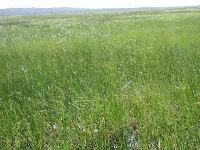 |
Rhynchospora swamp
This is the swamp we crossed to get to the swamp forest. A bit
of water is visible in the picture, and it was in this community
that I first found N. capensis, although I did not collect
here. Don't be fooled, the water is a good two feet deep here!
I've noticed in the last year of so that N .capensis
seems to prefer shallow, still water, often in areas with lots
of emergent vegetation, while N. caerulea seems to prefer
deeper water, often lacustrine or riverine banks. |
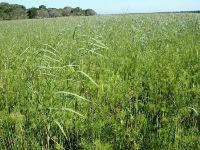 |
Cyperus and Phragmites Swamp
This is part of the broad peat swamp. Its all part of the same
swamp, but it forms a different community. The Phragmites
is short due to it having burned some earlier this year. The
trees are part of the swamp forest. |
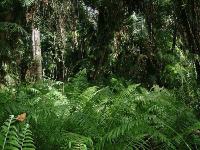 |
Ficus Swamp Forest
The peat here is several metres deep, and there are many
small streams criss-crossing the forest floor. Several species
of ferns including climbing species, as well as a bamboo species
occur here. Also a creeper called Smilax anceps, which
I've learned to hate with a passion. It's covered in thorns and
rips you apart. Cuts take ages to heal as well. |
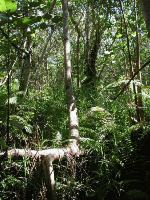 |
Ficus Swamp Forest
This is typical of peat substrate swamp forest in the area, The
dominant tree species is a Ficus, here the tree in the
middle. Many climbing ferns are also present, although not in
this picture. |
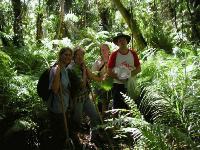 |
Ficus Swamp Forest
This is us. From left to right, Ina Venter, the student whose
project we were helping out with, Dr. Christine Bredenkamp, my
supervisor's taxonomist wife, myself with the soil auger which
we used to determine soil composition and water table depth,
and Retief Grobler, who has helped out a lot with the departmental
pond. He also works on peatlands, but further north of St. Lucia.
The picture was taken by Prof. George Bredenkamp, my supervisor. |
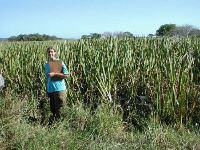 |
Scleria poiformis and Ina
This picture shows the height of a Cyperaceae species,
Scleria poiformis. The plastic bag to the left is my collecting
bag. Ina is standing in a crocodile slide were I collected a
Nymphaea capensis. |
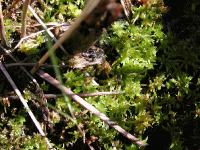 |
Sphagnum
This is the Sphagnum moss that forms the peat of this
peat swamp. It is the only peat swamp in South Africa that is
formed by moss. The rest are mostly formed by Carax and
Phragmites. |
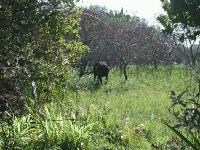 |
Killer Buffalo
A little encounter we had. This is a loner Cape Buffalo for which
the area is notorious. It's killed two tourists over the last
two years. It was shot the next day. |
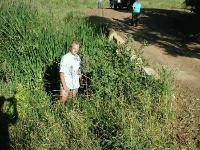 Field Trip To Lake St. Lucia
Field Trip To Lake St. Lucia Field Trip To Lake St. Lucia
Field Trip To Lake St. Lucia